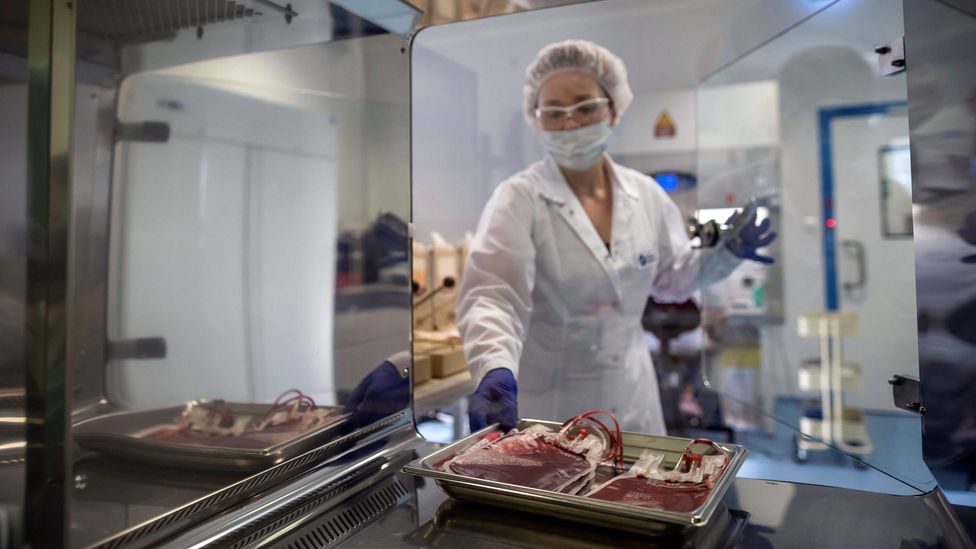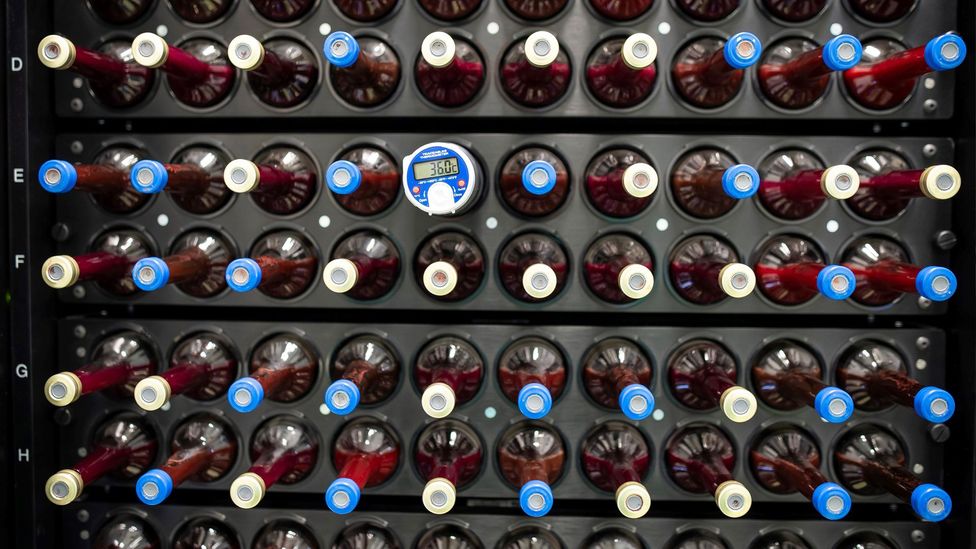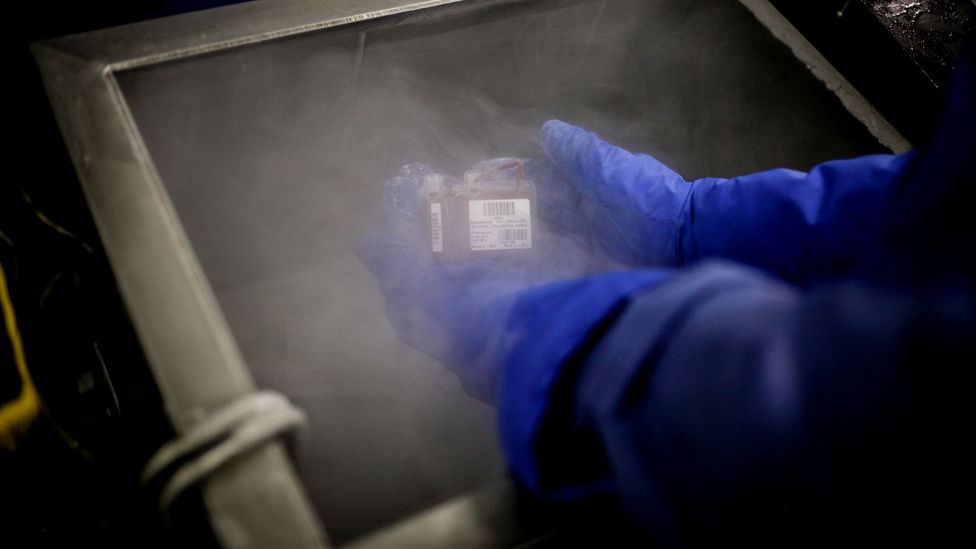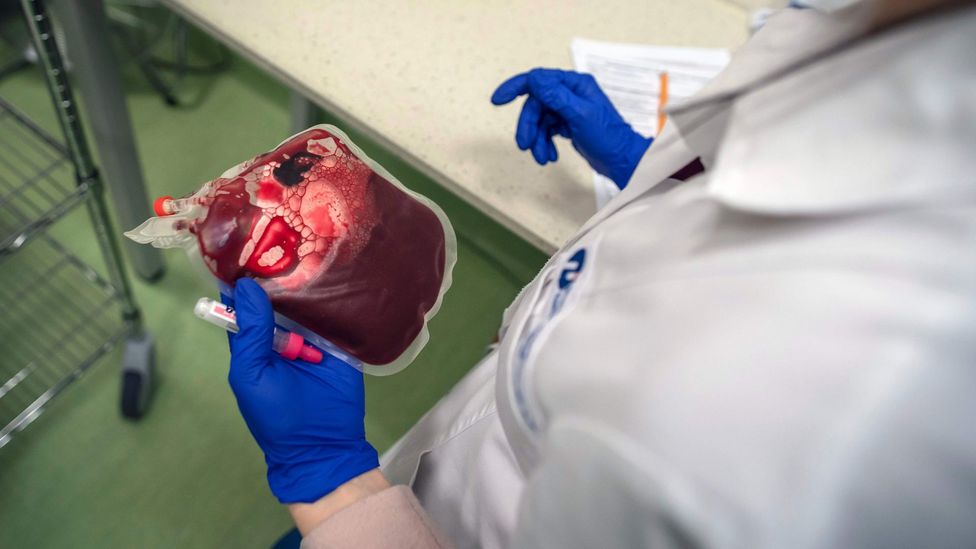In 2019, Praveen Gudipati and Ramya Raj, a couple based in Houston, Texas, gave birth to their first child, Kiaan. Before he was born, they made an important decision: what to do with the blood from his umbilical cord. It could either be discarded, donated, or stored privately for Kiaan's own future use if he needed it. For Gudipati, an IT professional, and Raj, an artist, the answer was clear.
"We decided to donate to a public non-profit bank, which meant that anyone who could benefit from the cord blood could access it for free," Gudipati says. His wife interviewed several cord blood banks before settling on Cord for Life Foundation.
What makes cord blood so precious is that it contains blood stem cells – cells that can grow into any kind of blood cell in the human body, including the red blood cells that carry oxygen or white blood cells that form part of the immune system. Blood stem cells have been used to treat leukaemia and other blood diseases. They are not only found in cord blood, but are also in bone marrow, which is why many treatments for blood diseases require surgical bone marrow transplants. In cases where a patient's own bone marrow is also affected by the disease, they need to be matched to a donor for the transplant – and there is still a high risk of rejection in these procedures, meaning the patient's body may not accept the donated cells.
Cord blood transplantation, on the other hand, is comparatively simpler – more akin to an ordinary infusion of blood. The frozen cord blood is thawed, the stem cells are tested for viability and then infused intravenously. If your parents stored your cord blood privately when you were born, you could in theory have access to a supply of your own blood stem cells later in life (although it is worth noting that the longest cord blood stem cells have been stored with the cells still found to be viable is 20 years). If they chose a public bank, it could also be donated to others.
"Thousands of life-saving transplants are done every year using blood stem cells," says Leonard Zon, professor of pediatric medicine at Harvard Medical School and director of the Stem Cell Programme, Children's Hospital, Boston.
In terms of rejection risk, contamination and infection, cord blood cells have an advantage, says Zon. They don't need the surgery associated with a transplant, and they can self-renew. "A single blood stem cell could replicate and replace six pints [3.4 litres] of your blood," he says. "Currently medical experts are using cord blood to treat blood diseases – to either build up red blood cells in conditions such as sickle cell anemia or to treat leukemia," he adds, noting that they can also be used to treat rare inherited genetic disorders.

Individually, relatively few children need to access cord blood that has been banked, but if it can be matched to a donor, it can have wider benefits (Credit: Getty Images)
Around the world, a small but growing number of parents are concluding that banking their baby's cord blood is the best way of ensuring future access to this potentially life-saving resource – though the procedure's popularity varies a lot between countries. According to Cell Trials Data, a provider of data on clinical trials of advances cell therapy, cord blood banking rates are highest in the US, at 3% of births each year. In India, that number hovers around 0.4% of births, while in the UK just 0.3% of births bank cord blood each year and in France that number is as low as 0.08%. The global cord blood banking market was valued at $1.3bn (£1.03bn) in 2020, and is expected to grow to $4.5bn (£3.6bn) in the next decade.
For parents who can afford to bank their baby's blood privately, the decision may feel easy. After all, there is no risk in storing it, and they would then have direct access to perfectly matched blood. However, some argue that as a health resource, cord blood is at its most powerful when used as a public good, not a private one.
According to the American Academy of Pediatrics, even though there are over six times as many units of cord blood stored in private banks worldwide compared to public banks, the latter have released about 30 times more units for therapeutic use.
Zon points out that blood stem cells are an immensely valuable resource, but that doesn't mean that private storage is the only option for accessing them. "I always tell parents that if they can afford it, to privately bank their cord blood. Otherwise, it's just not required," says Zon. As long as public banks keep growing, and donations get more diverse, it is possible to find a match if ever you need it, he says. He also urges parents to be realistic in their expectations of private banks, and choose theirs carefully. "In any procedure where you're storing a tissue, there's a chance of it being infected. So, the competence (of the healthcare worker) who's storing the cord blood is important."
Parents also need to be aware that cord blood likely has a finite shelf-life, where it can't be stored indefinitely, Zon says.
One study of the claims made by private cord blood banking companies in Canada reported there was "substantial hype" in their online marketing material
In some countries, cord blood could indirectly help address other problems – such as the spread of antibiotics-resistant "superbugs" in hospitals. In India, for example, there have been concerns over rising antimicrobial resistance, and avoiding surgery could be hugely beneficial, experts say. (Read BBC Future's report on the superbug crisis.)
"Multi-drug resistant bacterial infections [for which antibiotics have failed to work] are a huge problem in paediatric bone marrow transplant patients in India," says Hariharan Periasamy, a scientist at the Drug Discovery Research Centre, Wockhardt Research Centre in Aurangabad, Maharashtra. This is leading to longer hospital stays and higher costs, he says. Blood infusions from cord blood, on the other hand, don't carry such a high risk.
You might also be interested in:
- The controversial cells that saved 10 million lives
- How an ancient Greek baby myth still shapes our minds
- The unwarranted hype of stem cell therapies
However, some experts caution that the power of cord blood should not be over-estimated. One study of the claims made by private cord blood banking companies in Canada reported there was "substantial hype" in their online marketing material, from overstating the odds of a child needing to use their cord blood, to amplifying the promise of how it can be used. The Canadian Blood Services, which funded the study, say the chance of cord blood being needed by a child as between one in 20,000 (0.005%) to one in 250,000 (0.0004%). In India, the probability of needing the stored cord blood in the first 20 years of life is estimated to be 0.04% to 0.005%.
"It's not a magic pill that cures all, and yet it's being marketed that way as 'biological insurance', which is misleading," says Somya Gupta, an obstetrician and gynaecologist at Cloudnine Group of Hospitals in the North Indian city of Gurugram. "If you bank your baby's cord blood, it's a 100% match for them, but if it's a rare disease that you're trying to treat, their cord blood would still have the factors that drive the illness, so it can't be used." She favours public banks – of which there are very few in India. "We do urgently need to establish public cord blood banks."

Donated umbilical cord blood's potential value as a health resource is growing as the number of diseases it can be used for increases (Credit: Getty Images)
Currently, parents in India either pay a huge sum to store cord blood in private banks, or discard the cord blood. The Indian Society of Blood and Marrow Transplantation registry data shows that only 60 unrelated cord blood transplants were done in India from 2012 to 2020.
In the US, where public banks are more abundant, there is a slightly different debate around cord blood – namely, whether it might be used to treat certain inherited diseases.
New hope?
When Bertrand Might was two years old, he received an infusion of his own cord blood cells. He was suffering from a condition that was affecting his brain, says Matthew Might, Bertrand's father and director of the Hugh Kaul Precision Medicine Institute at the University of Alabama, Birmingham.
The exact condition was not identified until much later: Bertrand was the first patient diagnosed with NGLY1 deficiency, a complex neurological disorder in which there is a deficiency of an enzyme known as N-glycanase 1 (NGLY1).
"Our thought was that if the mutation did not affect his cord blood, these stem cells might begin to help repair some of the brain damage and produce a functional version of his missing enzyme," Might says. "Even if it didn't produce the enzyme, there was reason to hope that it might temporarily halt or reverse the loss of white matter in his brain."
The infusion was given as part of an experimental study by Joanne Kurtzberg, professor of pediatrics at Duke University in 2009, testing the impact of stem cell infusions on children with conditions that impacted the brain.

The maximum shelf-life of umbilical cord blood in cold storage has yet to be determined as the banks were only established 30 years ago (Credit: Getty Images)
The infusions did indeed appear to help Bertrand, at least temporarily. For a period of two years, MRI scans showed that there was no further loss of white matter in the brain. Might also noticed an improvement in his son's motor skills. "I recall him being able to hold a spoon again most vividly," says Might. "His babbling became more coherent and intentional as well, even if not speech. It provided a pause on what had been a relentless decline. It bought us time to get a formal diagnosis." The diagnosis in turn helped provide Bertrand with the right care and treatment, and to extend his life, says Might.
Bertrand passed away at age 12 in 2020. The infused cells ultimately lacked the ability to heal his condition, Might says, since they contained the same mutations that caused his disorder.
While using a patient's own cord blood in these situations is unlikely to work as it will carry the same genetic faults causing the disease, matching them to donated cord blood holds more promise.
One small-scale trial conducted at the University of Pittsburgh Medical Center Children's Hospital of Pittsburgh used donated umbilical cord blood from public banks to treat 44 children with a variety of 20 non-cancerous genetic disorders, including sickle cell anemia, metabolic disorders, Hunter syndrome and immune deficiencies. The trial has raised hopes that infusions of donated cord blood could be used to treat a wide range of patients with inherited illnesses.
For Gudipati and Raj, the couple in Texas, this hope of helping another child is what ultimately made them donate their son Kiaan's cord blood: "We believed that Kiaan made his way into the world with the hope of making a significant difference in someone's life," says Gudipati. "So we didn't hesitate. We didn't want this precious resource to end up as bio-waste."
--
Join one million Future fans by liking us on Facebook, or follow us on Twitter or Instagram.
If you liked this story, sign up for the weekly bbc.com features newsletter, called "The Essential List" – a handpicked selection of stories from BBC Future, Culture, Worklife, Travel and Reel delivered to your inbox every Friday.
